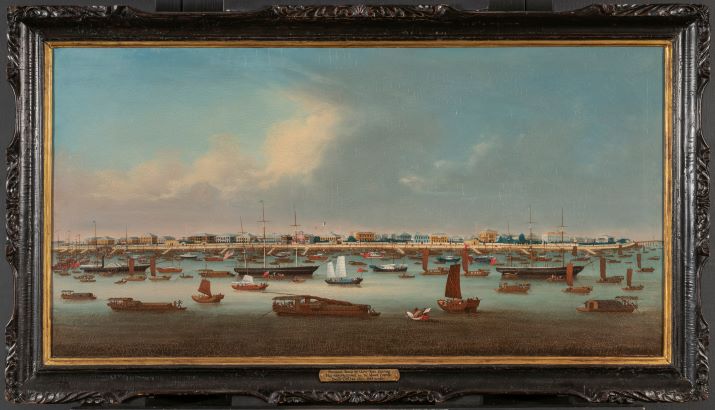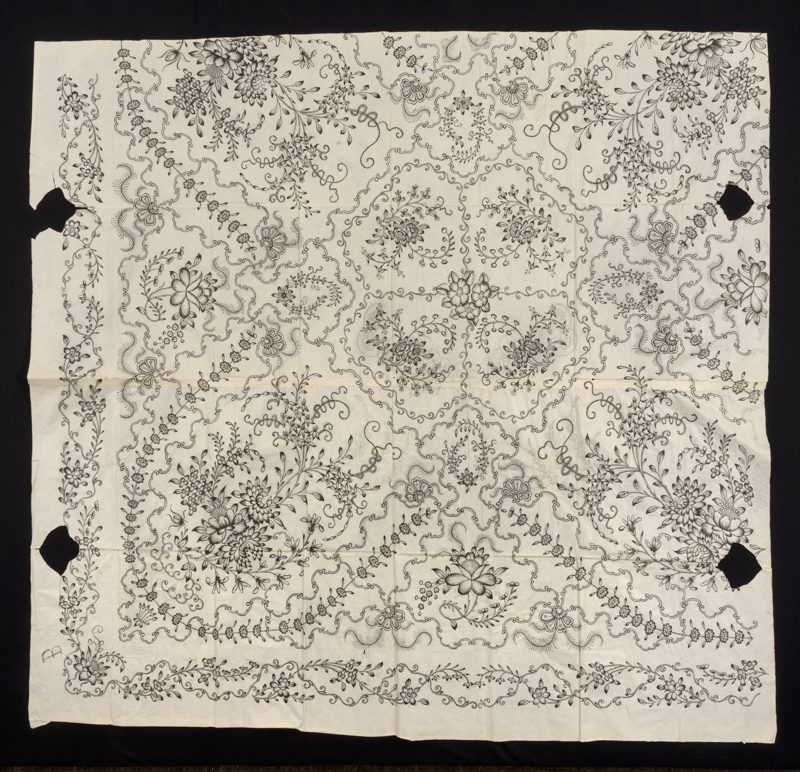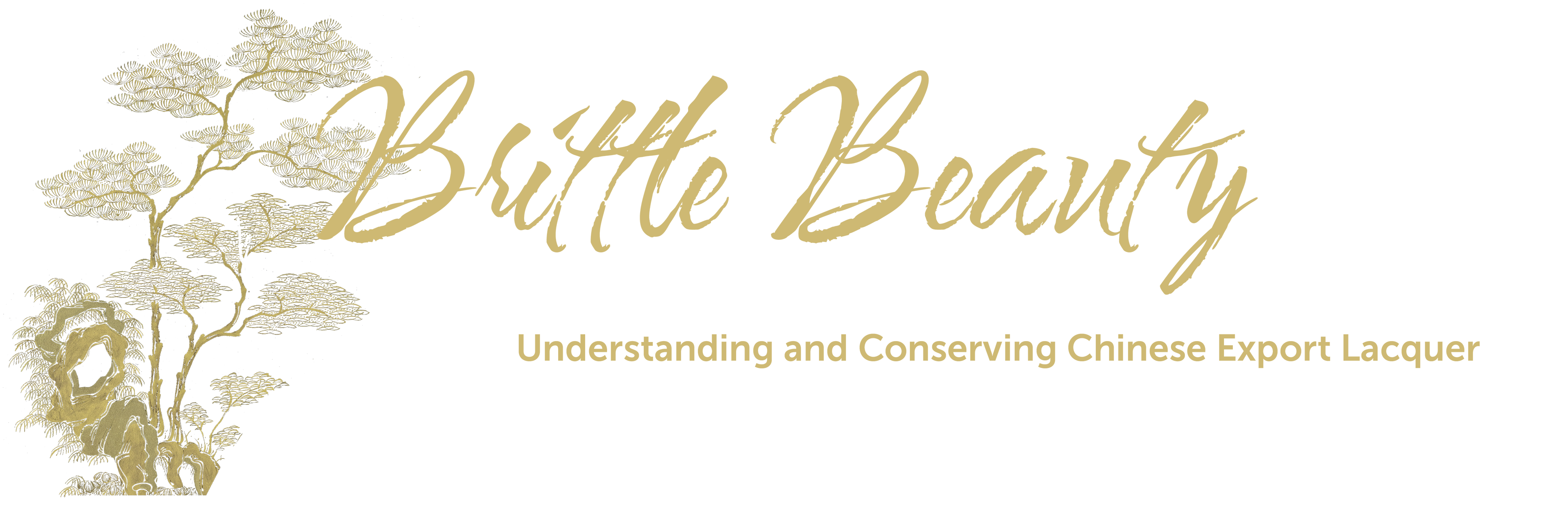Delaware and China Trade
At the end of the first Opium War, 1845, Britain negotiated a “concession,” a political boundary demarcating a Shanghai trading zone that was free from Chinese governance. In 1848 China granted an adjacent concession to America.
American merchants such as those of the Mustard and Hemphill families of Delaware funded and engaged in venture trading to Shanghai. Robert West Mustard, a native of Lewes, founded Mustard & Co. on Nanjing Road in Shanghai (just to the right of the church tower in View of the Bund) and traded American-grown tobacco for Chinese export goods.
Irishman William Hemphill arrived in Wilmington in the 1750s and partnered with Philadelphia merchant Robert Ralston to finance trade to the West Indies, France, and China. The woven and embroidered shawl, lacquer shawl case, and paper pattern displayed here are one of a set of two that descended in Hemphill’s family. William’s son, James (1774‒1833), ventured to the Dutch port of Batavia (present-day Jakarta, Indonesia) and may have had direct contact with Shanghai and other Chinese ports, whence these shawls could have been exported.

View of the Bund, Shanghai, with the American Clipper ‘Aurora’
Chow-Kwa
China; 1863
Oil on canvas
Gift of Greta Layton 2015.0030.001.001a,b
The British and American concessions, or settlements, in Shanghai combined in 1863 to form an area known as the Bund (in Chinese, “outer bank”; in Persian, band, meaning “embankment”). The American clipper ship Aurora, depicted in the Huangpu River among other vessels waiting to moor at the Bund’s piers, was constructed at the Chelsea Shipyards in Boston Harbor, and sailed to Shanghai in 1862–63. The Chinese artist Chow-Kwa depicted this vessel, the Shanghai waterfront, and the Western-style buildings of the Bund in precise detail. Commissioned by the Salem, Massachusetts, trading firm Pickman, Silsbee & Allen, the Aurora traded regularly with Manila, Java (Indonesia), and Hong Kong. Before it burned, in 1870, the ship sailed under the British flag to Melbourne, Kolkata (Calcutta), and Mumbai (Bombay).


Shawl case and pattern
China; 1820–40
Wood, Asian lacquer, powdered gold; laid paper, graphite, and black ink
Gift of Mrs. Philip J. Kimball 1964.0083
Typical of 19th-century square, plain-woven shawls made for export to the West, this example was made without a center seam on a specially designed loom. Professional embroiderers worked the design by hand, following patterns such as the one seen here on the case, and added knotted fringe borders—an embellishment also used to decorate Chinese furnishing textiles and women’s clothing made for use by the Chinese. An essential fashion accessory for middle- and upper-class women in the 19th century, embroidered shawls were widely imported from China and worn by women throughout Europe and America.

